Jellyfish are magnificent creatures that everyone loves to see, even though they are toxic when touched. In this article, we will find answers to your long-awaited question, “How are jellyfish born.” For that, we will have to explain the jellyfish life cycle.
Imagine a jellyfish, and you will likely see a translucent, bell-shaped creature with long, flowing tentacles.
And a baby jellyfish? Probably a smaller version of the adult. Right? Wrong.
The iconic jellyfish shape is actually the last stage of jellyfish life called “medusa.” Soon after jellyfish become medusas, they die.
Jellyfish life cycle
Jump To
Jellyfish have an incredible life cycle, just like frogs, for example. They undergo an astonishing transformation during their lifetime with unbelievable reproduction both sexually and asexually.
The jellyfish life cycle consists of several stages.
- Egg
- Larva
- Polyps
- Scyphistoma
- Ephyra
- Medusa
- Death
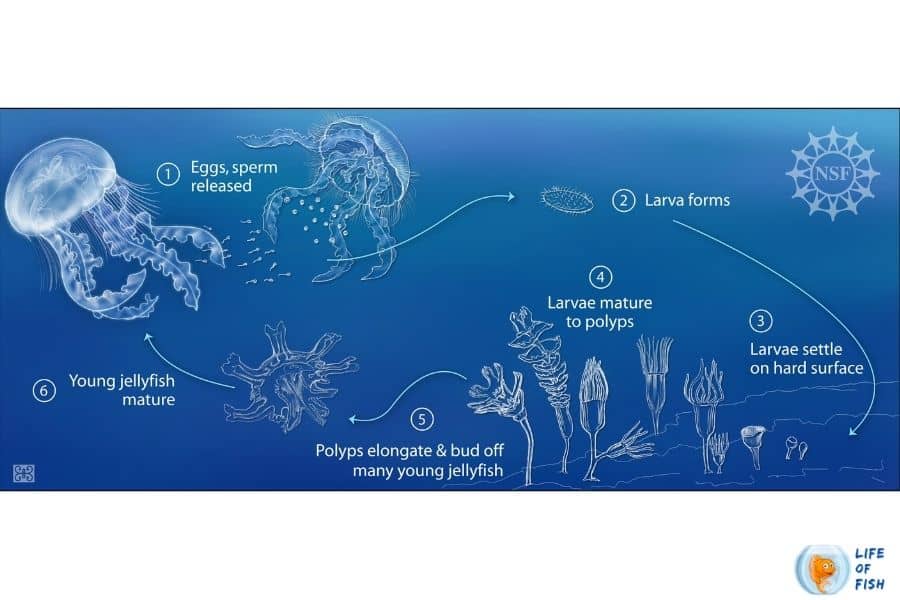
Egg Stage is where life begins
Jellyfish eggs are produced through sexual reproduction. When a male releases sperm near a mature female that is carrying eggs, the sperms go through the female’s mouth and fertilize the eggs.
In some species, this breeding occurs differently. For example, box jellies pull the female jellyfish near with his tentacles. Then it passes the sperm package to the female’s gonads.
Gonads are the reproductive organs of both male and female jellyfish. When eggs are fertilized, the females release the eggs to the current to drift freely.
But some species, take the extra step by attaching the eggs in their oral arms and protecting them until they hatch.
This reproduction usually happens when jellyfish gather in large numbers (we call it a Jellyfish bloom).
These spawning events occur throughout the “medusa” stage of jellyfish and are triggered by the presence of other jellies, light, and food availability.
The larger an adult jelly can grow during this time, the more eggs it would be able to bear. Soon after the adult jellyfish (medusa) breeds, it becomes senescent and dies.
So that’s the answer for how are jellyfish born, But that is not all of it. Let’s find out more.
Planula Larva Stage (Baby Jellies)
Depending on the jellyfish species, the eggs hatch within days and release a tiny larva called planula.
These planulae can swim freely. They swim until they find a perfect habitat on the seafloor.
These larvae are more like microscopic flatworms, and they are covered with tiny hairs called cilia.
Planula can swim because of these cilia as they beat rhythmically to allow the planula to move around.
The habitat of planula may change according to the jellyfish species. Some jellyfish attach to a seabed while others attach themselves to other animals, particularly adult jellyfish.
Once they find a perfect spot, the planula enters the next life stage.
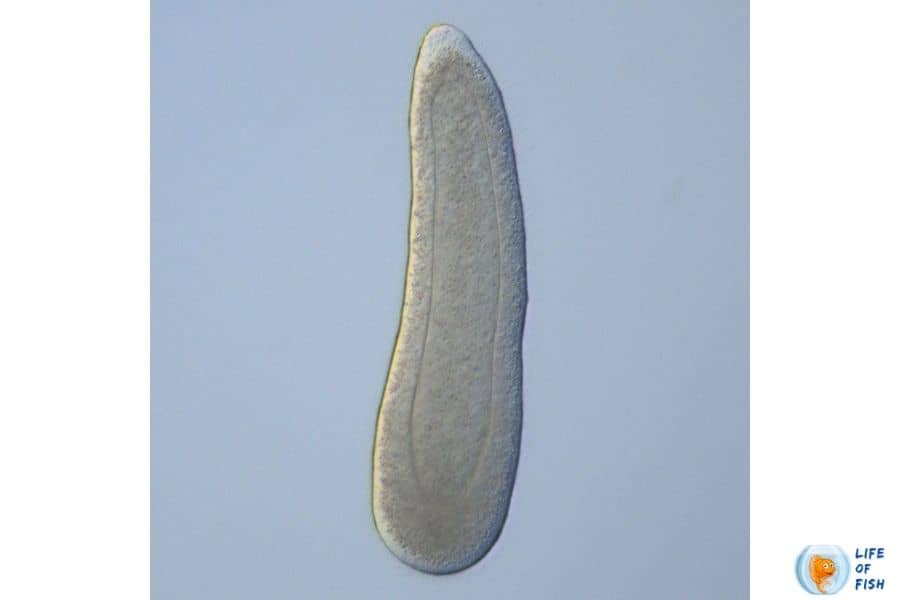
The Polyps Stage (Cloning Era)
The attached planula develop into polyps, and they resemble their close relatives, hydroids, sea anemones, and corals.
In fact, these relatives also follow the same life cycle and halt at this point. The related species like anemones grow up into polyps and become fully grown polyps.
But jellyfish surpass this stage and become “medusa” at last.
jellyfish polyp looks like small stalked marine animals with the head fixed to the ground.
The other end with tentacles is extended into the water and the jellyfish feed with its mouth that is placed in the middle of the polyp’s tentacles.
When the jelly is in this stage, it has a fully developed digestive system and can catch prey and feed itself efficiently.
They have developed their stinging cells to paralyze and catch the prey. Different jellyfish have different lifespans as polyp.
Usually, a jellyfish will stay as a polyp for several years. And that is because polyps are waiting for the perfect time to mature.
They generally mature when there are many jellyfish to spawn or when the conditions are suitable.
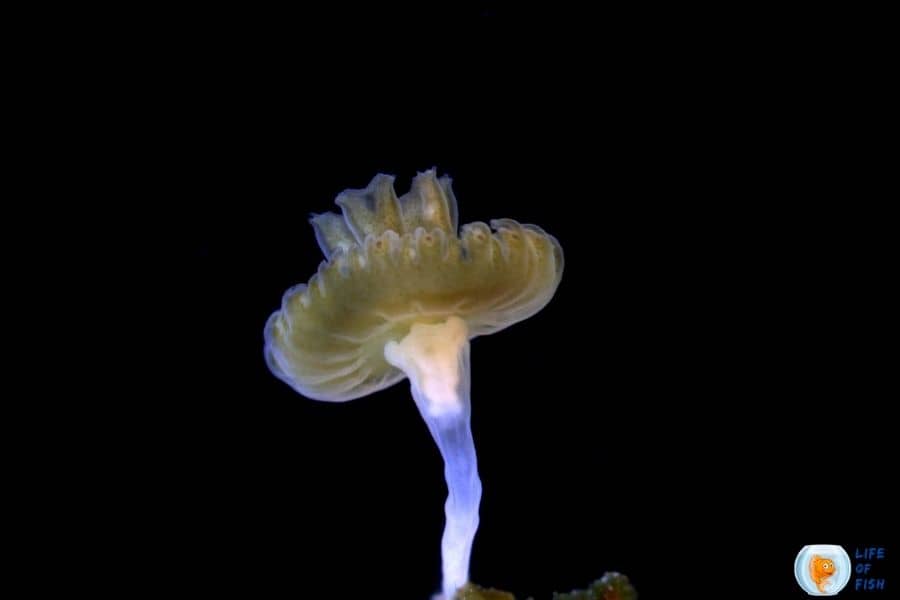
Tiny Ephyra Stage
When the polyp is bud off, those tiny segments are called ephyra. These organisms are free-living and precursors of adult jelly.
These ephyrae are no more than few millimeters long, but as they swim around, they feed and grow.
However, ephyra may be outcompeted by other clones and the original polyp as it is extremely small.
Although the ephyrae grow into adult jellies eventually, they still do not look like adult jellies.
They do not have the closed bell shape and stinging tentacles like the adult jellyfish. They find food with the help of their undeveloped lobes by pushing food towards their mouth.
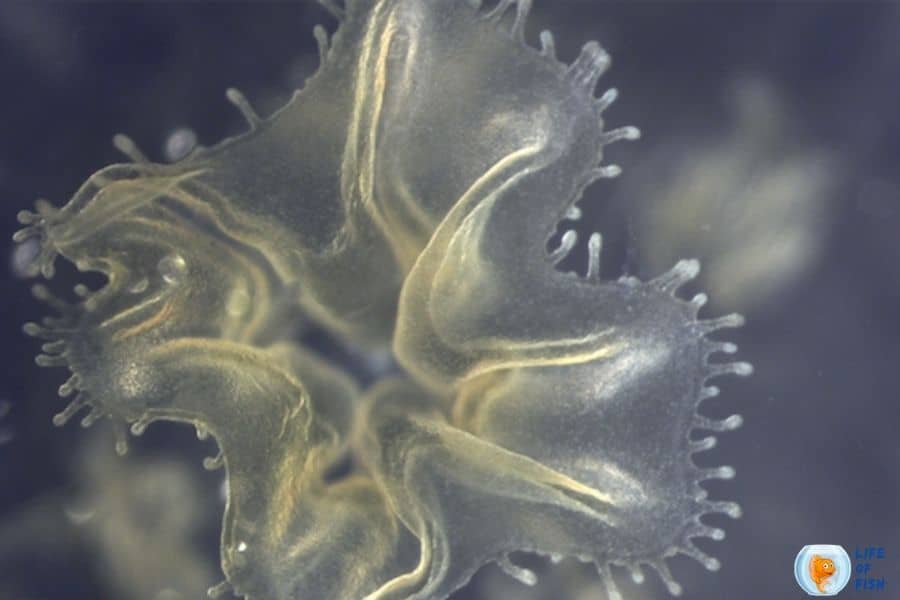
Medusa form (Adult jellyfish)
As the ephyra grows, it will form tentacles, oral arms, stinging cells, and the bell shape according to their species.
When the ephyra grows into the adult form, it is called “Medusa.” The initial adult is small, but it is already a fully grown-up “adult” jellyfish that can reproduce.
But because of several reasons, these tiny jellyfish grow as large as possible in a short time span. These reasons include,
- In some jellyfish , the medusa needs to be a bigger jelly to reproduce successfully. Only if the jellyfish grows more prominent will it be able to produce more eggs or sperms. Some examples are moon jellies and compass jellies that gather in large numbers to spawn.
- Some jellyfish species live in the deep sea, and they get caught by predators easily if they are small.
- Since they are fewer and far between, these species need to grow faster to deter predators to survive long enough to breed.
- Some jellyfish-like South Africa’s pink meanie rely on other types of jellyfish blooms to reproduce. Since these conditions are mostly short-lived or unusual, these species will have to grow as fast as possible to take advantage of them.

How do jellyfish reproduce?
Jellyfish reproduce both sexually and asexually. polyps reproduce asexually and medusa reproduces sexually.
Asexual reproduction – scyphistoma
Jellyfish reproduce asexually. First, jellyfish polyps begin to multiply asexually when the conditions are ideal.
The polyp elongates and clones itself to several segments, which eventually bud off and forms into several independent jellies.
This cloning process is called strobilation, and the strobilating polyp is known as scyphistoma.
When the polyp is ready to strobilate, it reabsorbs its tentacles into the body and expands its body than usual.
The body becomes narrower, and you can clearly see it forming new segments.
Once these segments have separated completely, the grooves between them grow deep enough for each segment to have its own set of muscles, nerves, and digestive system that is entirely independent of the other segments.
Eventually, these segments bud off, and then the jellyfish steps into another interesting phase.
Sexual reproduction
Since jellyfish reproduce sexually by mating at the medusa stage, you might be wondering if they may mate with themselves by any chance.
Yes, but only if they are hermaphrodites, and interestingly, they are not. Almost all jellyfish species (I mean true jellyfish ) have discrete sexes.
So, if the planula is a male, all of its future clones will be males. If the planula is female, all of its clones will be females.
However, in rare species, Hermaphroditism may occur to ensure the survival of those species as they never happen in large numbers for mating.
For example species like moon jelly and upside-down jellyfish reproduce both sexually and asexually.
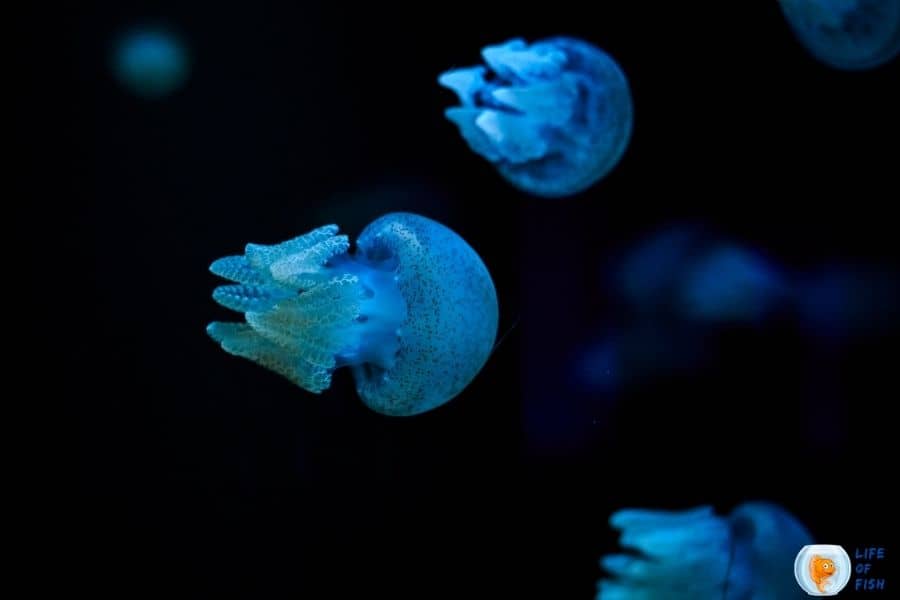
The Natural Death of Jellyfish
As we discuss how are jellyfish born in this article, we also learn about how are they die.
If the jellyfish survive until it reproduces sexually, it will “biologically grow old” after breeding.
Typically, after the medusa reproduces, it will not live for long. The “medusa” jellies that are done reproducing will only survive for few more months.
It becomes “Scenescant” and dies after several months.
So, as you see, the “medusa” stage is the final stage of Jellyfish life. Soon after the sexual reproduction of jellyfish, their life ends.
But this is not the actual end of their life because they already have cloned themselves at the polyps stage.
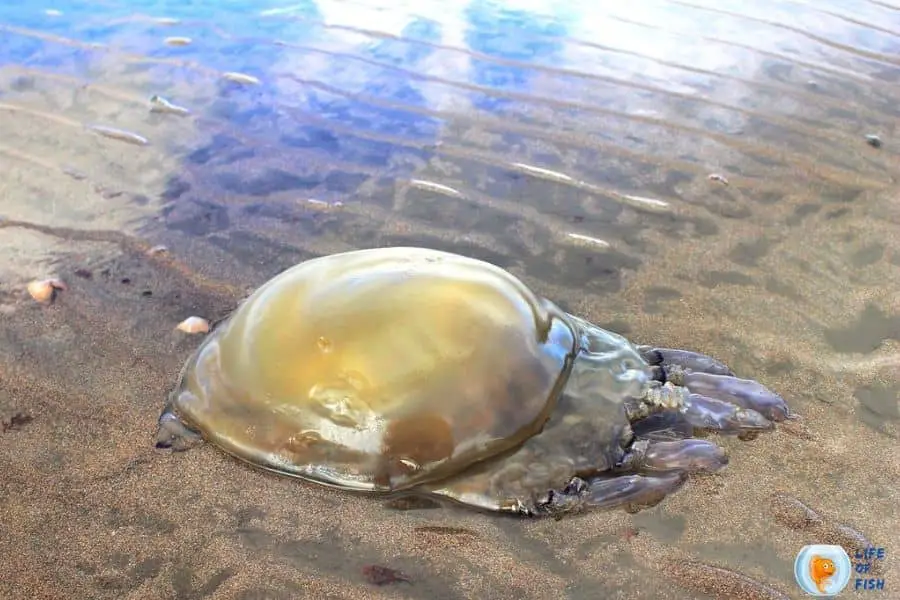
Related questions
What is Jellyfish Bloom and What Causes it?
When jellyfish identify perfect conditions for reproduction, the polyps and ephyrae begin to grow as fast as possible because they don’t need unnecessary long lives.
For example, when the climate changes or anglers catch most of the jellyfish predators, the area becomes suitable for jellyfish breeding at some point.
Interestingly, jellyfish are exceptionally good at sensing these ideal conditions and become “medusa” almost immediately.
When jellyfish grow up fast and begin reproducing, it is called jellyfish bloom.
It’s not that jellyfish were not there before, but they were so small and hadn’t become medusa until they met ideal conditions.
How long do jellyfish live?
Most jellyfish species do not live for more than one year, and some smaller species only live for few days.
But, some jellyfish can live for more than 100 years. Since these jellyfish clone themselves at the polyp stage, they theoretically have an exceptionally long life than other marine species.
Is there an “immortal jellyfish”?
Yes. There is a jellyfish known as the immortal jellyfish. These species have a slightly different life cycle than other typical jellies.
The adult medusa of immortal jellyfish can revert back to the polyp stage to survive in difficult circumstances such as malnutrition, salinity reduction, rapid temperature changes, and accidents.
Then this polyp can again strobilate and produce more ephyrae. So, biologically, immortal jellyfish is really immortal.
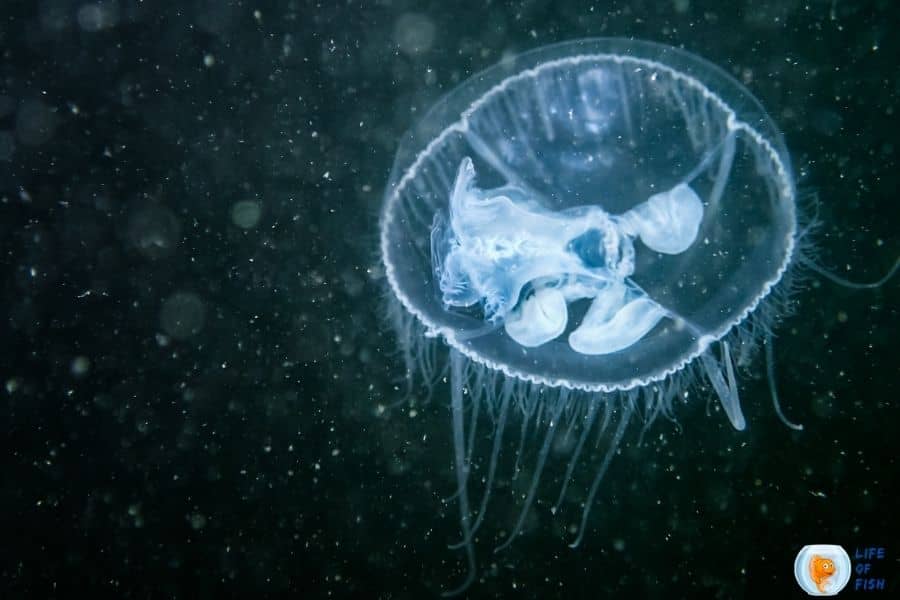
Are jellyfish overpopulated?
Since the over fishing of jellyfish’s natural predators (such as tuna and swordfish), jellyfish populations are now growing at an alarming rate.
It is not the time to say that jellyfish are overpopulated but, they are becoming a problem to the fishing industry by tearing fishing nets and harming fish.
And also, tourists avoid visiting areas with jellyfish blooms as they hate jellyfish stings.
They are not necessarily a problem for marine life but, jellyfish blooms are definitely a problem for humans.
What do jellyfish eat?
All jellyfish are carnivore species. Small jellies usually feed on plankton, fish eggs, shrimplets, larva, and many other tiny creatures.
But large jellies can actively catch some prey and eat shrimps, lobsters, crabs, small fish, and other tiny jellyfish.
Almost all jellyfish species practice cannabilism, which means they eat their own species if given a chance.
Jellyfish have a simple digestive system and always feed on small prey, unlike Ctenophoras that can actively catch large prey and eat by biting off chunks of the prey.
They do not intentionally search for food. Instead, they wait for the prey to touch their tentacles.
When an animal touches one of the tentacles, it immediately stings the animal with venom and paralyzes it. Then the jellyfish bring the prey to the mouth with its arms and eat it.
Read Next: Rainbow Jellyfish | 8 Lesser Known Facts About Them |
